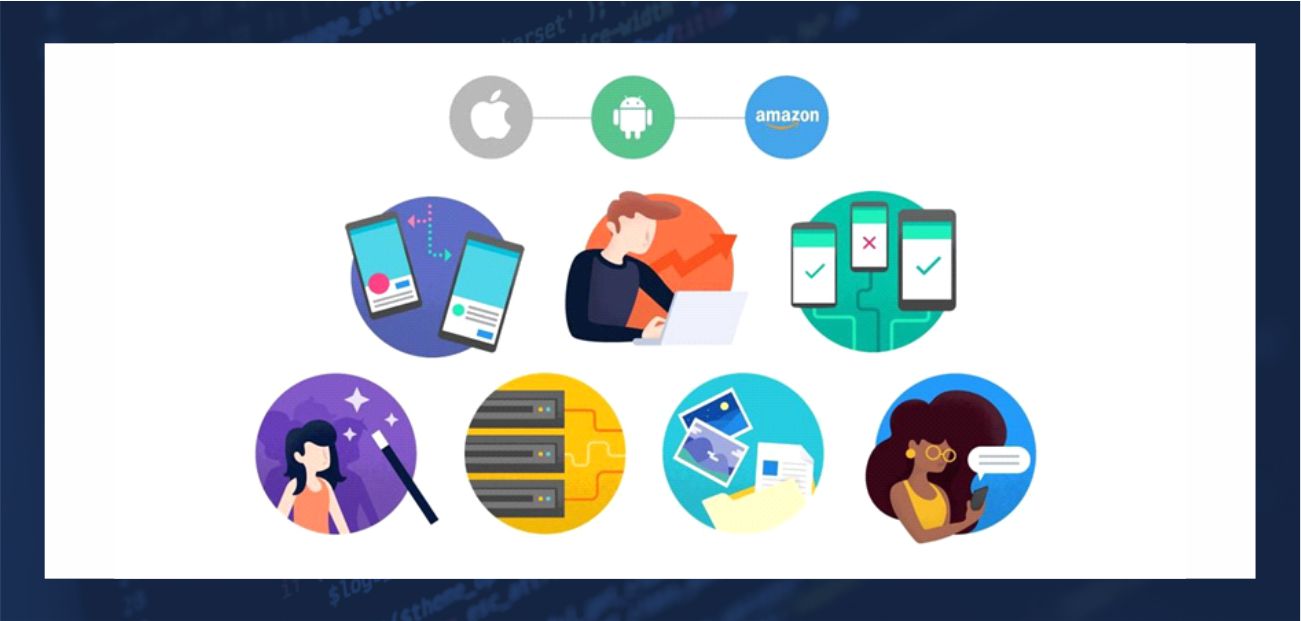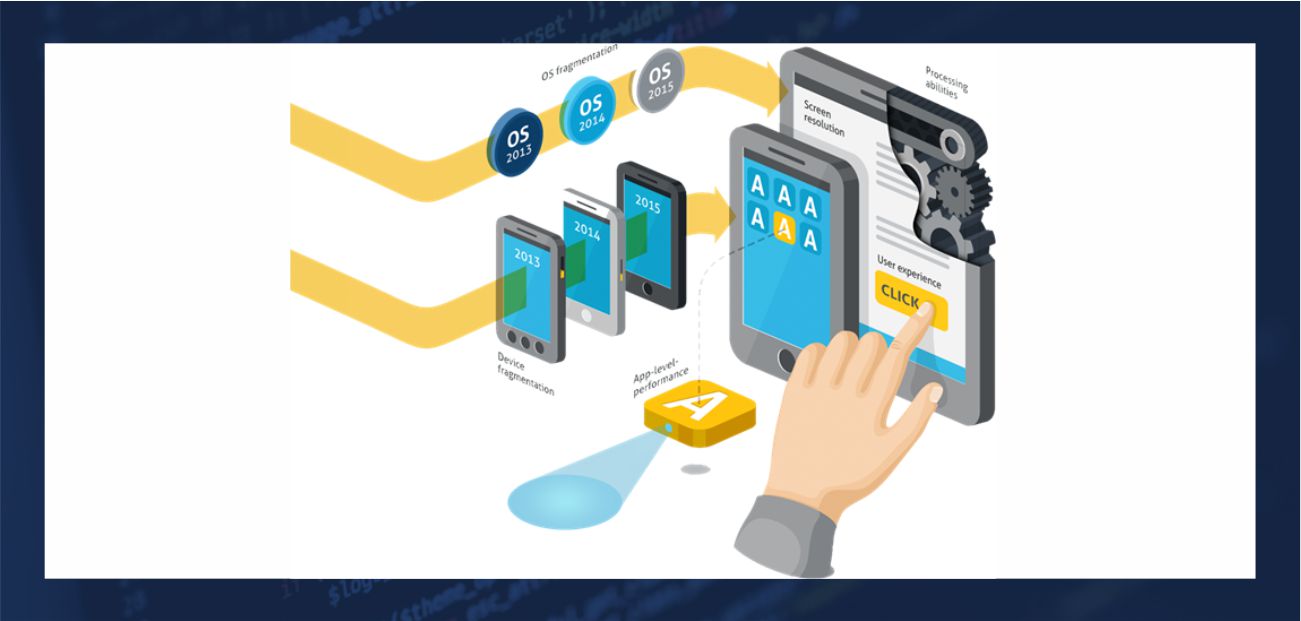Steps In A Cross-Platform Mobile Application Development
Published on 12 Jun 2020

Steps In A Cross-Platform Mobile Application Development
In 2020, 3.5 Billion smartphone users are present in the world. That i 45.05% of the world’s population owns a smartphone. These smartphones work on different operating systems like iOS, Android, Microsoft, Blackberry, etc. So, if you want to make sure that your application can reach these 3.5 Billion people, you will have to publish your mobile app on all of these platforms. Making cross-platform app development a good option.
Building and launching the same mobile app for all these different operating systems can be difficult and can end up costing you time, money and effort. This is where cross-platform mobile development can come in handy.
Cross-platform app development enables you to build an application that can be run on various platforms. This allows developers to code once and then deploy it on various platforms.
Let’s look at the steps involved in cross-platform mobile development and the various tools available to make the cross-platform mobile application development process easy.
Step 1: Choose a Dev Approach for your Mobile Application – Native, Cross-platform, Hybrid & PWA’s

Before you commit to cross-platform mobile app development, let’s just take a look at the different iOS or Android app development approaches. The above chart is the easiest way to understand which mobile app development methodology to use for your application needs. So, let’s take a look:
Native App Development
For Native Applications, for every platform we build a software application in a specific programming language. So we will write and deploy separately for iOS, Android or any other Operating System we wish to launch our app on.
Native Apps offer the best performance and can use every hardware feature of the device but at the same time they cost a lot more money and take longer to get to market.
Cross-platform App Development
Cross-platform development is based on using a single toolset to deliver the application across multiple platforms.
It’s the easiest way to reach a larger audience at a lower cost quickly. The UI and performance will definitely not be like that of a Native app but you could get pretty close.
Hybrid App Development
Hybrid apps allow us to blend web elements with mobile ones. Here, we build a codebase using standard web technologies (HTML, CSS, JavaScript) and then wrap it in a native container – the WebView.
These apps result in shorter time-to-market, are cheaper to build and allow for code sharing. But on the downside, their performance is average and a great UX experience difficult to achieve.
Progressive Web Apps
PWAs are not really mobile apps but offer similar functionality and experience. They are like Hybrid apps, built using web technologies and run on a browser. They are cheaper, faster to build and offer significantly optimised UX.
These applications work offline and offer many more features in Android like GPS access, push notifications than in iOS, where there are a few restrictions like no camera, no launch image, no installation API, etc.
Now that you know all the mobile app development methodologies and when to choose which, if cross-platform mobile app development is the right approach for your app, then let’s build one:
Step 2: What are the Right Platforms For Your Needs?
We have iOS, Android, Blackberry, Windows and a few other small players. Building native apps for each of these platforms is not just expensive but a long and difficult process. So, we need to pick and choose. Although many cross-platform app development tools allow you to build applications for all of these platforms, you may still want to pick the top 2 or 3 platforms to launch your application on.
Once you know the platforms you want to launch on, you have got to consider the many devices on each of these platforms because every device has different features eg. screen size. So your cross-platform app development team must take into account the need to check for some capabilities and behave accordingly.

Step 3: Choose The Cross-Platform App Development Tool For Your Application Needs
There are a huge number of cross-platform mobile application development tools available. Basis the needs and objectives of your application, you can choose what works best for your cross-platform mobile development.
Here are a few cross-platform mobile development tools that we at Systango consider the best based on the following factors:
- Speed Considerations
- Feature Support
- Framework Risk
- Development Cost
1. Appcelerator Titanium
The Titanium SDK operates using Javascript. This tool makes it easy to create native apps for both iOS and Android. It allows for 60%-90% of code reusability. It is an open-source cross-platform mobile application development tool and gives you access to Hyperloop, the best cross-platform API for multi-platform development.
2. Adobe PhoneGap
It is based on the open-source framework Apache Cordova, which gives you access to a complete set of PhoneGap tools. It offers a wider range of cross-platform mobile development capabilities by allowing you to build not just iOS and Android apps, but also apps for Windows and Blackberry.
3. Corona SDK
Corona is a free cross-platform app development tool primarily used for 2D games or apps for mobile devices, desktops, and tv using just one codebase. Corona offers high performance, high-quality graphics and high-speed development.
4. React Native
Companies like Facebook, Instagram, Walmart have all built their applications on React Native. Basically, react-native allows you to build native applications using Javascript as the programming language. It also allows you to write modules in C, Swift or Java. What it does is, interprets your source code and converts it into native elements in almost no time at all.
6. Microsoft Visual Studio Xamarin
This tool allows you to build applications for different platforms like iOS, Android, Windows using a single .net code. It offers up to 75% of code reusability. It also offers tools like debugging, UI design and code editing.
6. Flutter
Flutter is an open-source and free cross-platform framework for building iOS and Android apps. It is an ideal framework for MVP development and allows you to work with many continuous integration tools like Jenkins and Travis.
Step 4: Choosing the Right Methodology: Agile
Mobile applications require a lot of flexibility based on user demand. So it’s important to be able to make changes as and when needed and still produce high-quality deliverables. The best approach to this is by using an Agile methodology for your cross-platform app development.

Using Agile Methodology offers us many benefits:
- Allows for High Collaboration between client and project team
- Complete transparency
- Early and predictable delivery
- Easy to make changes
- Focuses on Users
Step 5: Defining the user experience- UI/UX design

UI/UX experience is an important aspect of cross-platform mobile development. The above photo illustrates how according to the platform, the application’s feel, experience, and design should also differ because users expect a certain kind of look and feel depending on the platform. If you want to deliver a flawless experience for your user, you need to consider the UI guidelines of the various platforms you have considered to deploy/launch your application on to ensure perfection.
Step 6: Testing and App Store Approvals

It sounds obvious, but applications often get rejected over quality concerns. Sometimes, even after they get approved and launched, you realize that the app hasn’t done too well and is just turning off the users.
You dig deep into the reasons to find out that an app crashes on trying certain features. While you could go deep into the grieving mode, there’s something else you can do. Testing!
Testing applications for cross platform capability can be immensely complicated if not approached in a proper way though there are many tools that can easily help you do your job if you have an experienced team.
What are the best options (tools)?
- Browserstack
- Testize
- TestPlant cross-browser Testing
- Browsershots
Different App Store Approval
Apple App Store:
Apple has strict rules and guidelines for publishing applications. Some basic requirements are:
- . The application should be interesting and must have some use for its users.
- . The application should be dynamic, feature-rich, and creative.
- You have better chances if you use the native features of mobile devices.
Google Play
– You will need to upload the apk file of your application on the google play developer account to get your app published.

Step 7: Choosing the Right Technology Partner
We are finally on the last step of the cross-platform app development process.
You need to find a technology partner that will help you add real value to your business. They should be able to deliver quality in the allotted budget and within the decided timeline. Your partner should have a broad awareness of your industry domain (ecommerce, technology, education etc.), your target market and how their domain expertise can help your business grow, which only comes with experience.
Look out for a company which has dedicatedly worked for your industry domain and has built numerous products in the past. In short, check out their portfolio.
Systango has 13+ years of experience, a team of 200+ experts and has worked across industries making sure to fulfill their client’s expectations. These are the things your future tech partner should possess too -experience, dedication, loyalty, business know-how.
If you want a free consultation for your app idea, say Hi!
Related posts
App Development
Mobile Apps
Technology
Web Apps
Building Your App? Rust vs Go: A Guide for Business Owners
21 Feb 2024
Blockchain
News
NFT
Software Development
Technology
Web 3
How Systango Pioneered USA's 1st NFT Ticketing Marketplace for Veraticket?
01 Feb 2024
Let’s talk, no strings attached.